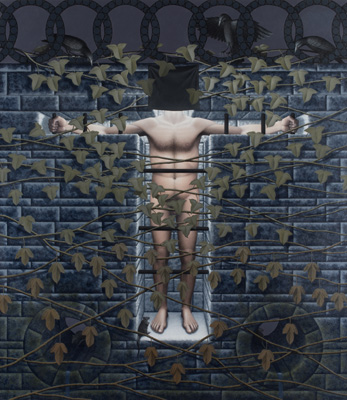The Niche (2002) depicts a nude male with arms outstretched, his body encased in a barred, crucifix-shaped cell formed within a stone wall. Head covered by a black cloth, the stolid figure coolly clasps the steel bars that contain him, hinting at the determined willfulness that has led to his captivity. Bathed in light, the figure paradoxically seems both trapped and exalted, gripped by a kind of paranoiac ecstacy.

2002, acrylic on canvas
78 x 66 in.

